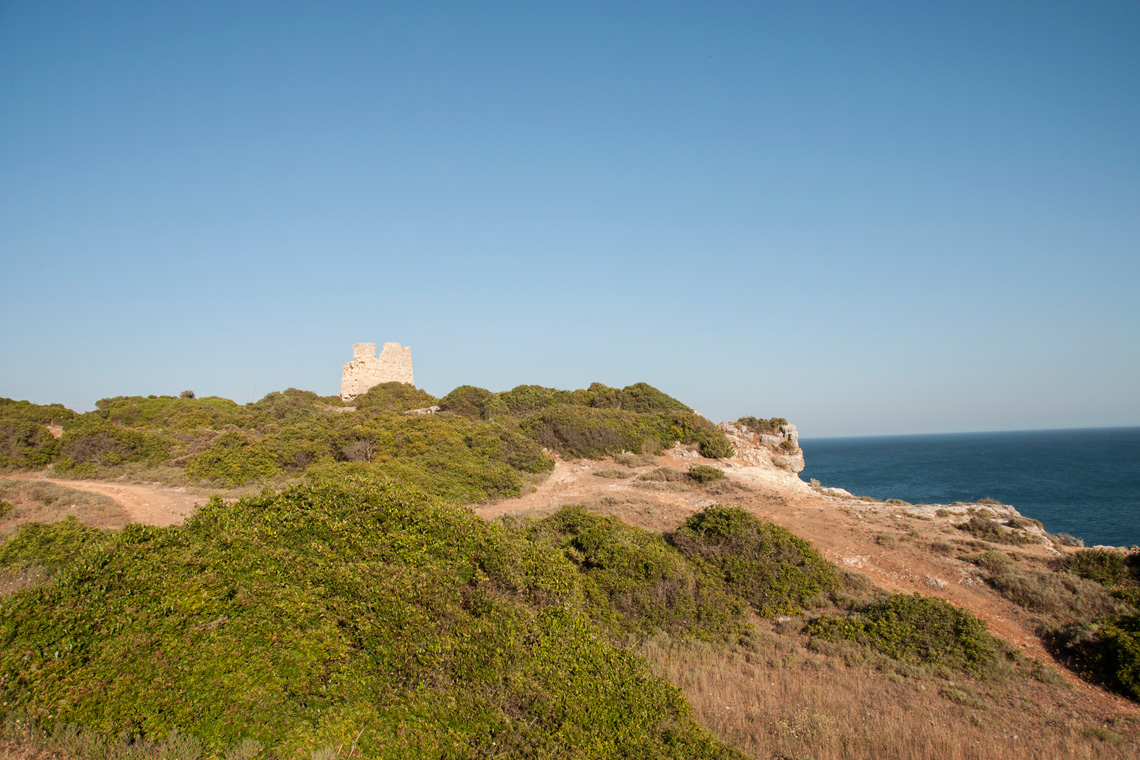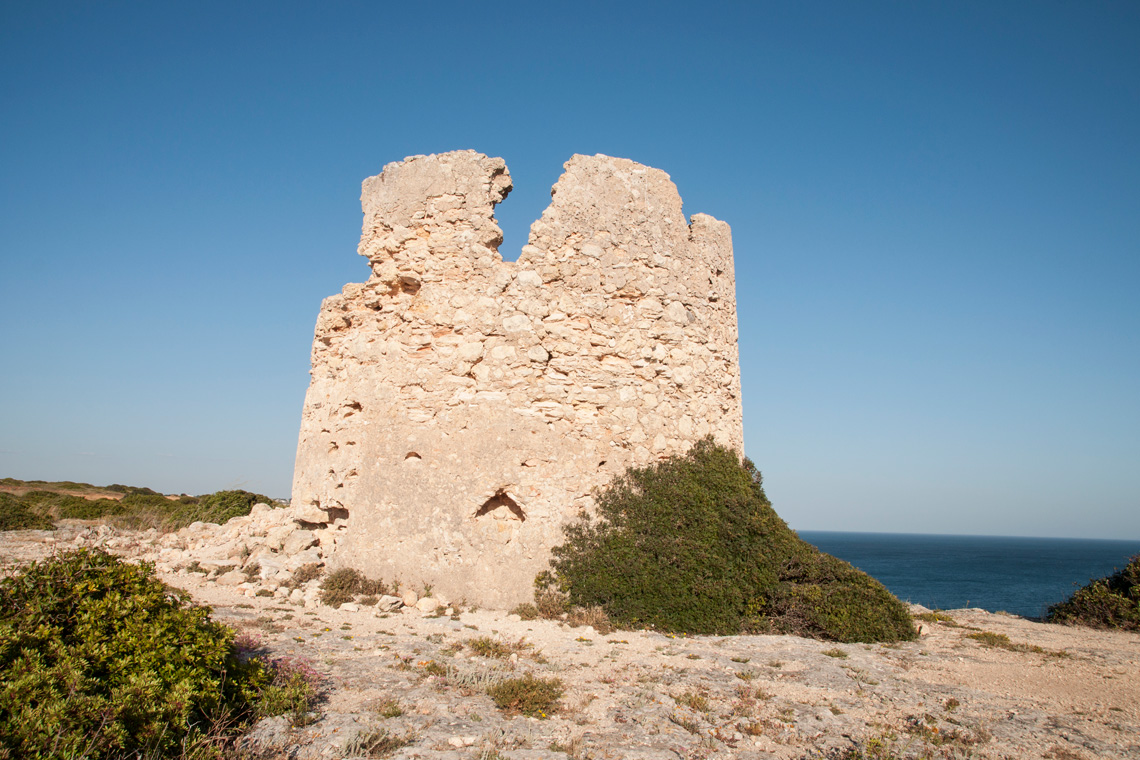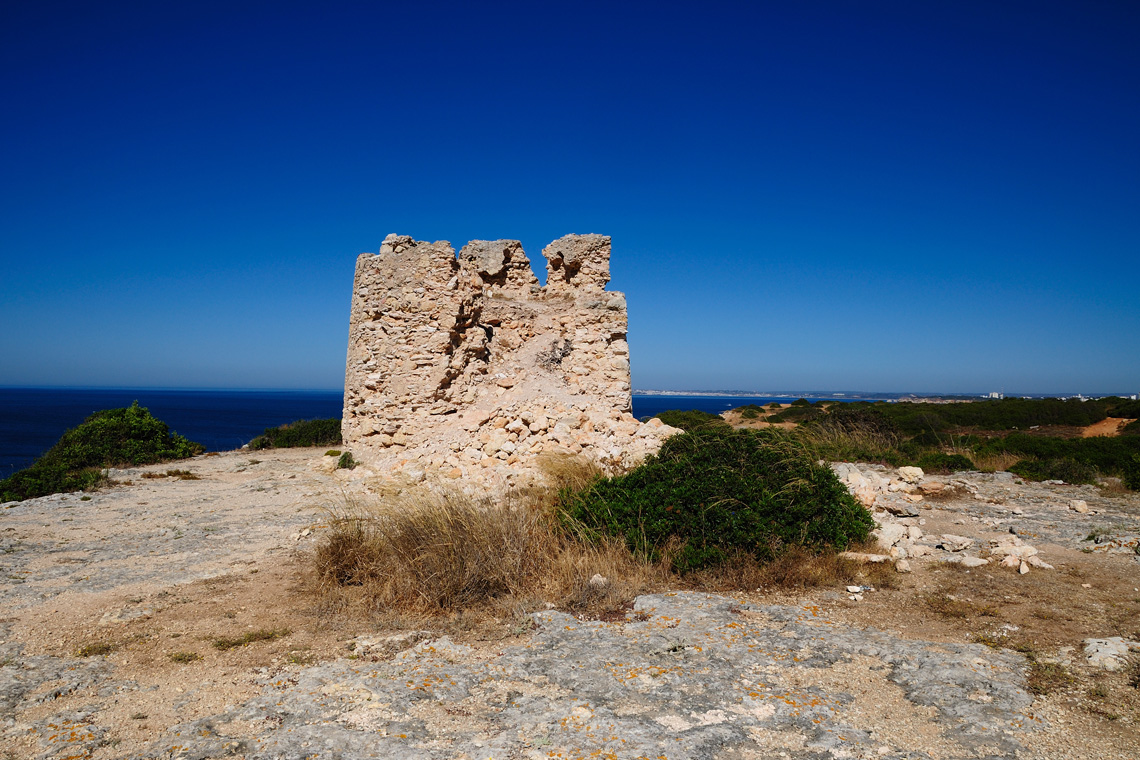04. Torre da Lapa
Watchtower of Lapa
Watchtower of Lapa
Cronologia: Idade Moderna (séc. XVII)
Chronology: Modern Age (17th century)
Chronology: Modern Age (17th century)
A Torre da Lapa é uma estrutura de vigilância costeira, provavelmente construída no séc. XVII, sabendo-se que já existia em 1693, como provam registos da época existentes no Tombo da Igreja Matriz de Lagoa.
Fazia parte de um conjunto defensivo e de vigilância ao longo da costa algarvia que começou a ser erigido após a reconquista cristã, reforçada nos reinados de D. João III e D. Sebastião. Trata-se de uma atalaia, de planta circular, com 6m de diâmetro, construída em alvenaria de pedra argamassada e rebocada.
Da arriba onde foi erguida, perto de Vale da Lapa, avista-se a foz do rio Arade e uma vasta extensão do oceano. Acedendo ao alto da torre por uma escada amovível, seria possível avistar ao longe embarcações piratas oriundas sobretudo do norte de África para roubar e sequestrar. Perante o perigo eminente, quem estivesse de atalaia poderia fazer fumo de dia e fogo de noite, avisando assim as populações e as guarnições das fortificações costeiras.
Hoje, a Torre da Lapa, como outras ao longo da extensa costa algarvia, perdeu a função de vigilância mas dali continua a ser possível contemplar um fascinante cenário natural. Não longe, a Torre do Moinho, hoje rodeada pela povoação de Ferragudo e já muito descaracterizada, deveria ter a mesma função.
The Torre da Lapa (Lapa Tower or the Marinha Tower) is a surveillance coastal structure, probably built in the 17th century, as it already existed in 1693, according to the records of the time in Tombo of the Main Church of Lagoa. It was part of a defensive and surveillance set along the Algarve’s coast that started being built after the Christian Reconquest, reinforced during the reigns of King John III and King Sebastian. It is a watchtower with 6 m wide and was built using stone and mortar.
From the cliff where it was built, near Lapa Valley, you can see the mouth of the River Arade and the vast extension of the ocean. From the top of the tower people could see the ships coming mostly from Africa to loot and kidnap. People were then warned about the threat by setting up fire at night or making smoke during the day. The tower is no longer used for surveillance, but people can still visit it and contemplate the beautiful natural scenery. Not far from it, the Tower Mill, now surrounded by the population of Ferragudo and long featureless, was probably used for the same purpose.



